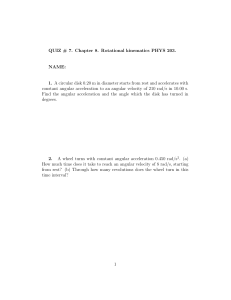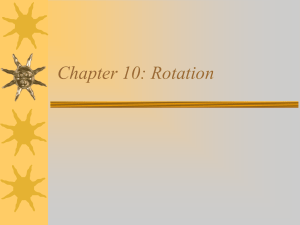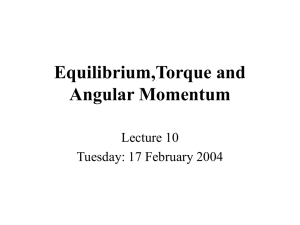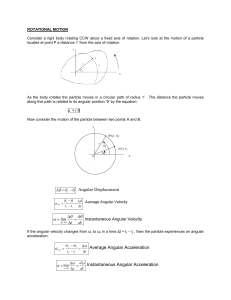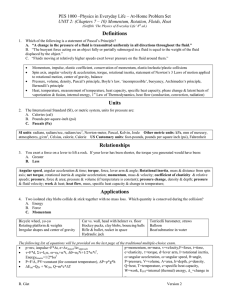Quick notes Giancoli #1
advertisement
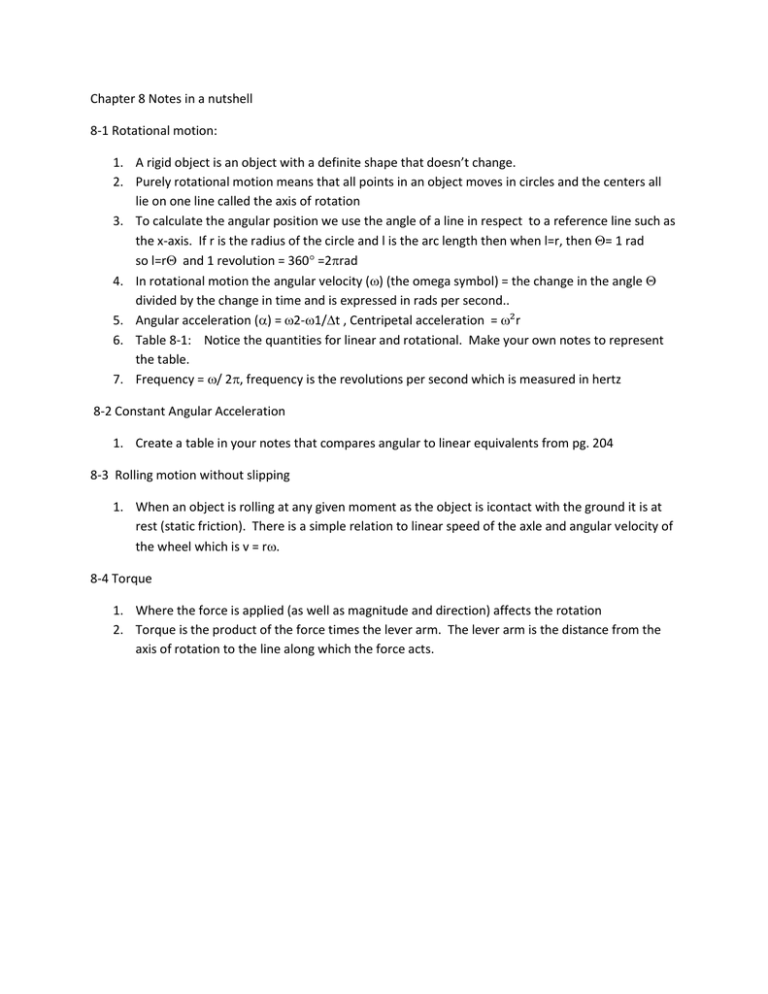
Chapter 8 Notes in a nutshell 8-1 Rotational motion: 1. A rigid object is an object with a definite shape that doesn’t change. 2. Purely rotational motion means that all points in an object moves in circles and the centers all lie on one line called the axis of rotation 3. To calculate the angular position we use the angle of a line in respect to a reference line such as the x-axis. If r is the radius of the circle and l is the arc length then when l=r, then = 1 rad so l=r and 1 revolution = 360 =2rad 4. In rotational motion the angular velocity () (the omega symbol) = the change in the angle divided by the change in time and is expressed in rads per second.. 5. Angular acceleration () = 2-1/t , Centripetal acceleration = ²r 6. Table 8-1: Notice the quantities for linear and rotational. Make your own notes to represent the table. 7. Frequency = / 2, frequency is the revolutions per second which is measured in hertz 8-2 Constant Angular Acceleration 1. Create a table in your notes that compares angular to linear equivalents from pg. 204 8-3 Rolling motion without slipping 1. When an object is rolling at any given moment as the object is icontact with the ground it is at rest (static friction). There is a simple relation to linear speed of the axle and angular velocity of the wheel which is v = r. 8-4 Torque 1. Where the force is applied (as well as magnitude and direction) affects the rotation 2. Torque is the product of the force times the lever arm. The lever arm is the distance from the axis of rotation to the line along which the force acts.
